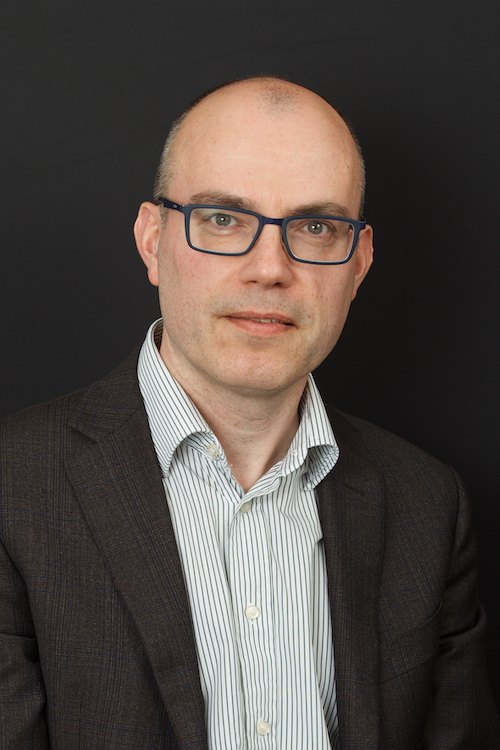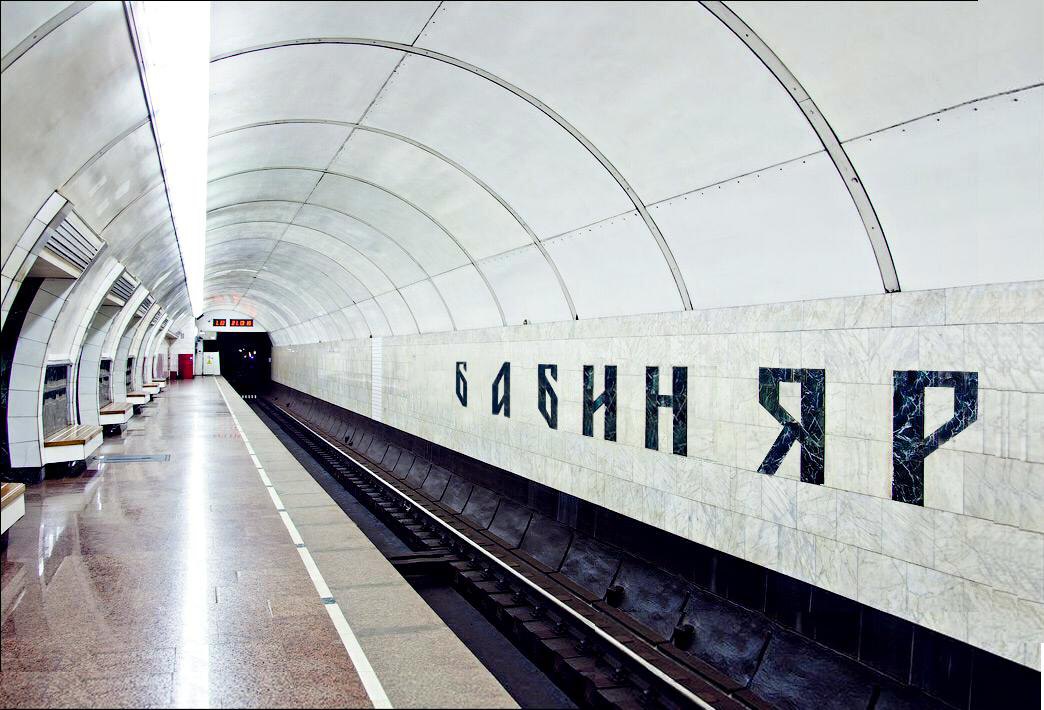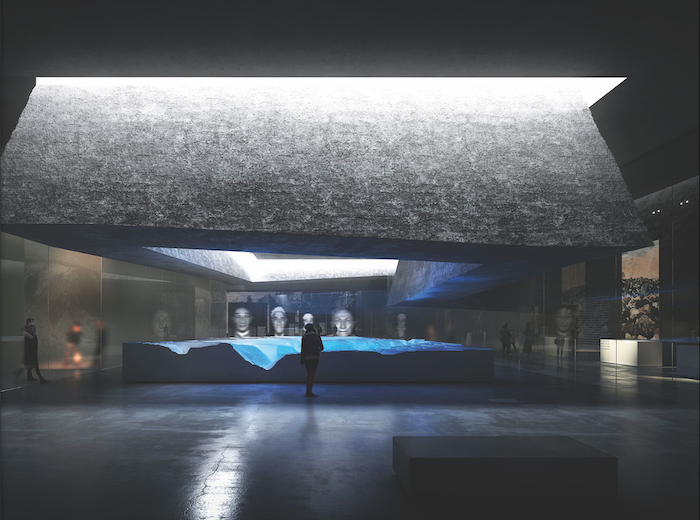
Why did you agree to be the Chair of a Scientific Council at Babyn Yar Holocaust Memorial Center in the first place?
It was a while ago. Yana Barinova approached me in December 2015 and announced the project. Later she came to Amsterdam with her colleagues, we discussed everything and I got a good feeling about all that. They invited me to be their academic advisor, which I became officially in February 2017.
The reason why they came to me was that they were looking for a recognised specialist on Babyn Yar.
But what were your personal reasons to join the project?
I knew about the earlier projects. They were either suppressed by the Soviet authorities, or not very well planned, such as the project Heritage sponsored by the JOINT organisation from the United States in the early 2000s.
In this case I noticed a clear desire to get all the information and expertise and to make steps in a well-thought-out way. And of course there was a clear notion that they had enough funding to do it. But the main reason was that I had a good feeling about the team. They were serious and they were going to settle an international supervisory board and to do everything in accordance with international standards for memorial centers and museums. That was my wish from the start as well.
When you are talking about the people that you trusted – you mean Yana Barinova and others on her team?
Yes.
Still, the money is provided by certain Russian businessmen. Did they somehow influence your work? Did you feel the presence of these people?
No, I did not meet these people for a long time till the moment much later. I was always in contact with Yana Barinova and people around her. It was fine by me.
I know the issue of this funding. But still, the money was available for a good cause. So in principle I am not against getting funding from such sources if there is a good process of using it.
In post-Soviet territory, history is tightly connected to the politics, to the people that are in power – every new government is trying to change the narrative. So there is a big question here: if Russian businessmen give money for the Ukrainian memorial center of Babyn Yar, will the historical narrative be influenced by that? In an imperial, pro-Russian and anti-Ukrainian way. Is it a legitimate fear of ours?
This fear is understandable. But the question is: are you willing to take a risk? The opportunity arrived, there are people who feel connected to Ukraine somehow.

I did not accept the idea that the memorial project in Babyn Yar is just a cynical ploy. Sometimes people actually want to do something good. So I was willing to accept that is was the case. I still think they mean well.
I think the alternative is to wait for the Ukrainian state to come up with the funds, which is not likely to happen. Ultimately, starting to make a memorial centre is what needed to be done at this place. It needs a space where you can have a roof over your head and contemplate the events that happened there.
Why do you think the Ukrainian state is not going to give the money? Did you have any conversations about this?
Well, it’s just my impression that’s there is not enough funding [from the government].
Returning to the question that you raised about governments that change the narrative: in a way I was pleased that it’s an initiative basically independent from the political wind. When you bring in the sponsors, a board of supervisors full of respected people, the idea is to have a lot of people looking on what’s going on.
And of course everyone was invited to join the conversation. Ideally, it would have been a сo-operation between the state and the NGO. On the other hand, even that can go wrong, as you see now in the POLIN museum in Poland. It's very difficult.
The other issue is, of course, the topic, the Holocaust, which for many reasons is difficult to handle everywhere – and in Ukraine and Russia even more. As you probably know, there is an international organisation called the International Holocaust Remembrance Alliance. This is sort of the United Nations for this topic. This is the forum that brings together country representatives and specialists. And for many years I have been waiting for Ukraine to join this body, but it hasn’t happened. I think it tells you something – that there’s a certain hesitation. Which I can understand, I guess, but it's ultimately very unsatisfactory.
Who has the power to decide whether to join this organisation? Should it be a scientific body or should the parliament vote for it?
The decision is not that difficult, because it is not a formal organisation, it's an alliance. So any government can just decide to pay the annual fee and then be a member. The implications are not small, because you will in a conversation about what you're doing. It's a nice form to improve everybody's activities in various fields. I was a member of the Dutch delegation for some time, so I saw how it worked – they help everyone to move up to a certain level, so to speak.

What are the main difficulties that you see in finishing the Babyn Yar Memorial Center project?
The main problem is an unexplained change of the management that happened last November and requires explanation, which I haven't seen. This is not a business where you can just dismiss everybody. This is not how it’s supposed to work. The world of Holocaust remembrance museums is very small. The number of people willing and able to be involved is not large, thus trust is very important. So this is a rupture of trust without any explanation, and it is very disturbing.
What did change in your work and communication with the team since this change of management?
I've looked at this thing from a certain distance. Of course, I'm always a bit at a distance being in the Netherlands, but I happened to be in Kyiv at the time and spoke with various people. And I didn't like what I saw and heard.
Now I do not have a contract with the Memorial Center; my last contract ended in January. And I decided that I didn't want to be their academic representative anymore.
Why?
Because of this development and some other issues. But the main thing is that I had some worries about the direction in which this project was going. Ultimately the main question is “What are people going to see there?”
And I’m just doubtful that the steps currently taken are well considered. I've told the people on the team: what I'm missing now is a moral compass. Where is this narrative going? What are the things that are going to be shown?
This was a big disappointment, of course, for me. I didn't see it coming.
Can you elaborate on that?
When you decide to change the management it makes sense to provide an explanation. It wasn’t like everybody was dismissed. Some people were let go, some people quit themselves.
Still, this is something that needs to be justified, in my opinion. Suddenly a lack of transparency emerged here.
Also I have doubts about plans of the new artistic director – a new function that wasn’t there earlier. Seemingly he is in charge of everything, even research. Suddenly a group of new people appeared, and they are completely new to me. They're not even familiar from any previous encounters.
The current artistic director has a history of this DAU project and I'm a bit worried that something inspired by that is being planned, which is not quite as I would like it to be. I think Babyn Yar should be a place of restraint, remembrance and sensitivity. It's very important given the fact that this is a former killing site. You have to be very careful in not doing too much.
Technically, many things are possible – 3D reconstructions, virtual reality, all kinds of things – but I liked what was approached at the Memorial center before – a considered restraint. The place itself is already very impressive. There is no need to fear that people are going to be bored or that it's not going to be exciting enough. I assume that these fears have perhaps played the role, but my opinion is different.
What do you think of the initiative of the new artistic director to rename the underground station near Babyn Yar?
I’ve never thought about this myself to even consider picking that name. I wonder what the purposes are. I haven’t heard any explanation for that either. Maybe I am missing something.

They say that the purpose is to provide constant memory for the citizens about the place. So that they would think about what happened there every time they are at the station.
Well, the idea was initially that this role was going to be played by the memorial center rather than by the Metro station. So I’m wondering what the added value is.
But it is not a common practice to name stations of public transportation after Holocaust sites?
Of course it isn’t. But it’s also not a common practice to have a metro stop near a killing site. That’s the whole problem. That station should have never been built there. But there it is.
I'm skeptical about the renaming. You know, I'm not the person to decide, of course. If people from the Jewish community are in favour, who am I to judge them? But for me it has no appeal.
Have you met Ilia Khrzhanovskiy in person? Did you discuss your further work at the Memorial Center?
Yes, we met last year. It was just a matter of becoming acquainted. There was no argument.
I’ve seen one of the drafts of the future project at Babyn Yar that is proposed by Mr Khrzhanovskiy. And there are things that tend to be more spectacular than sensitive. VR-projects, holograms, Stanford experiment reenactments etc. I wonder if he needs the scientific part of the project at all. Did you discuss that?
In my opinion, this memorial center needs the scientific expertise. I think that is something that hasn’t been changed. Our historical narrative is still on the website.
The narrative was always one of the most interesting and insecure elements of the whole project. Once you have a narrative, the question is how you’re going to show it. That is something that needs to be discussed and I don't know how this is going to happen. But officially the narrative is still in place.
What I am not sure about is if they are going to actually use the design for the building. There was this design competition, but I'm not hearing anything about taking steps to make sure this building is going to be built.
This also requires explanation. If you involve so many people in the design competition, at the very least you need to explain why you don't go ahead with what you chose as the winning design.
Well, all these are actually very serious concerns – the lack of transparency and the possible shift of the moral compass after to the appointment of the artistic director. Did you voice your concerns about the future of the Babyn Yar Holocaust Memorial Center to the Supervisory Board?
Yes, I sent a letter to Mr. Sharansky in March. I waited a bit and then expressed my concerns in the letter
Did you get any answer?
No. But I wasn’t expecting it. We’ll see what happens. I have a lot of questions and I am sad about it all.
In October I thought everything was really going very well. There was a lot of progress and a lot of support for this project, and this support was growing. And now, it seems to me, the project has made one or two steps back. It is going to be hard to repair the consequences. As I said, a rupture of trust happened. Trust, consistency and transparency are very important.

I accept that not everything can be transparent here. By the way, the new director has announced that he has to be transparent and maybe will even put all the discussions online. I haven't seen it yet.
The artistic director promised that?
Yes. My impression at the moment is that BYHMC is becoming an art project. The things that are currently underway suggest that, but maybe I don't know enough about the inner workings.
To finish our conversation, in your opinion, what are the world commemoration practices that Ukraine should look up to?
You have memorial centers and you have activities. They are all valuable. The range of practices is quite large. There are, for instance, online digital monuments where you can find information about the Holocaust. There are online Jewish Memorials, where you can find out more in one click. There is one nice project of this kind in my country. I don't want to say everything here is perfect – on the contrary, – but we also have the phenomenon of the Open Jewish Homes, where people lived or homes that were used for hiding. The doors open on a specific day and everybody can come in and listen to the stories. This could be implemented elsewhere and I think it is starting to.
Memorial centers are the best examples. POLIN used to be a good example. But I don’t have a perfect example for you. Babyn Yar in Kyiv is a very special case. It’s a memorial at a killing site in a city. It is not like “let’s all go outside and talk about it”. It’s in the city. So that needs a lot of care.
If we had proceeded the way we did last year, I think the project could have had a bigger chance of success. It would be a place where people would come and where a vibrant research community would be created. I am convinced that you need to have strong ties with foreigners who streamline it. It would be great for this memorial to become a place for intellectual exchange and social debates. It was a very ambitious project which the previous team had thought out very well. So it's really is a big shame what is happening now.








